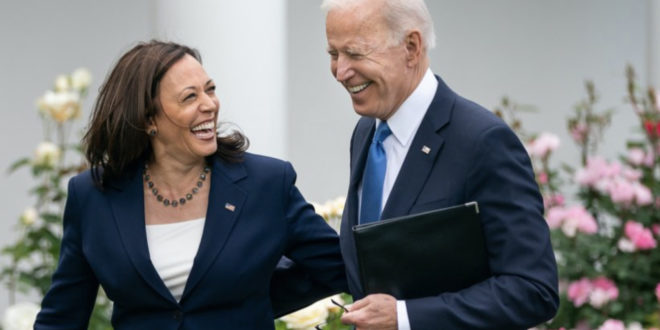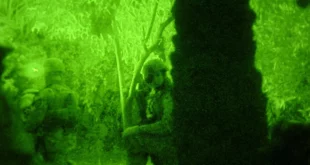President Biden will temporarily transfer power to Vice President Harris while he is under anesthesia today for a colonoscopy. Harris makes history as will the first woman in U.S. history to take on presidential power
“As was the case when President George W. Bush had the same procedure in 2002 and 2007, and following the process set out in the Constitution, President Biden will transfer power to the Vice President for the brief period of time when he is under anesthesia,” Psaki said in a statement. “The Vice President will work from her office in the West Wing during this time.”
Not to be alarmed though as the president will be put under anesthesia for a routine colonoscopy .
But the media is having its heyday declaring that this is the first time in the United States history that a woman has assumed presidential duties.
In the event, it is important to understand the constitution and situations that arise when the president cannot perform his duties.
What Does the Constitution say?
The Twenty-Fifth Amendment seeks to answer a series of questions raised by the original Constitution’s treatment of presidential and vice-presidential vacancies and presidential disability.
First, what happens when a presidential vacancy arises? Article II, Section 1, Clause 6 of the Constitution states that in “case of the removal of the President from office, or of his death, resignation, or inability to discharge the powers and duties of the said office, the same shall devolve on the Vice President.” The line of succession from President to Vice President is clear, but what exactly “devolves” on the Vice President? Is it the “office” of President or just its “powers and duties”? When President William Henry Harrison died in 1841, Vice President John Tyler forcefully asserted that he had become President. Although Congress accepted this result, some disputed Tyler’s reading of the Presidential Succession Clause.
Second, what should happen when a vice-presidential vacancy arises? The original Constitution did not provide for filling such a vacancy. Prior to the adoption of the Twenty-Fifth Amendment, one Vice President resigned, seven died in office, and eight took over for Presidents who died in office: all in all, the vice presidency was unoccupied more than 20 percent of the time. This was less of a problem when the office was held in low regard, which it mostly was until the mid-twentieth century. But as the vice presidency began to grow into its modern form—a sort of deputy presidency—it became more worrisome for the office to be vacant. These worries were sharpened by Congress’s design of the 1947 Presidential Succession Act, which places the Speaker of the House and the President Pro Tempore of the Senate immediately behind the Vice President in line for the presidency, even when they do not belong to the President’s political party.
Third, what happens if the President becomes unable to discharge the powers and duties of the office? Several Presidents suffered debilitating illnesses and injuries. For weeks and months at a time, the country was left without effective or accountable presidential leadership. Article II, Section 1, Clause 6 provided for the Vice President to step in when the President had an “inability to discharge [his] powers and duties,” but it provided no decision-maker, no procedures, and no definition of “inability.” Nor did it make clear whether the Vice President would act as President only until the President recovered, or instead would become President for the duration of the term. No Vice President wanted to seem like a usurper. In practice, power was never transferred and presidential inner circles typically concealed the President’s condition. This pattern came to be seen as increasingly irresponsible with the advent of nuclear weapons during the Cold War; the nation needed a fully functioning presidency at all times. In 1958, President Dwight D. Eisenhower sought to break the pattern by being more open about his health and by entering into an agreement with Vice President Richard Nixon that provided for Nixon to serve as Acting President in the event of presidential “inability.”
The assassination of President John F. Kennedy on November 22, 1963 brought renewed attention to these questions. Led by Senator Birch Bayh, Congress gave them focused consideration and, in July of 1965, sent the Twenty-Fifth Amendment to the states for ratification. Less than two years later, the necessary thirty-eighth state legislature ratified it.
In response to the first question, regarding presidential vacancies, Section 1 of the Twenty-Fifth Amendment formalizes the Tyler precedent. It confirms that when the President is removed from office, dies, or resigns, the Vice President becomes President. When President Nixon resigned in 1974, Vice President Gerald Ford became President under Section 1.
In response to the second question, regarding vice-presidential vacancies, Section 2 of the Twenty-Fifth Amendment requires the President to nominate a replacement Vice President when that office becomes vacant, subject to confirmation by a majority of both the House and Senate. In 1973, Gerald Ford became Vice President through Section 2 after Vice President Spiro Agnew resigned. When Ford took over the presidency the following year, he promptly invoked Section 2 to nominate Nelson Rockefeller to fill the resulting vice-presidential vacancy.
In response to the third question, regarding presidential inability, Sections 3 and 4 of the Twenty-Fifth Amendment establish two procedures for transferring authority to the Vice President as Acting President. Building on the Eisenhower-Nixon precedent, Section 3 allows the President to transfer authority temporarily, by submitting a written declaration that he is “unable to discharge the powers and duties of his office.” The President can reclaim those powers and duties later by submitting a second declaration “to the contrary.” President Ronald Reagan (once) and President George W. Bush (twice) transferred authority to their Vice Presidents under Section 3 for a matter of hours while they underwent planned surgeries. For more on Constitutional analysis Visit Constitutionalcenter.org.
 Soldier of Fortune Magazine The Journal of Professional Adventurers
Soldier of Fortune Magazine The Journal of Professional Adventurers






